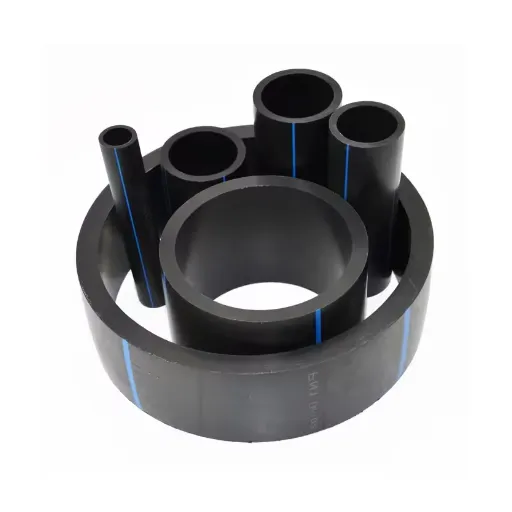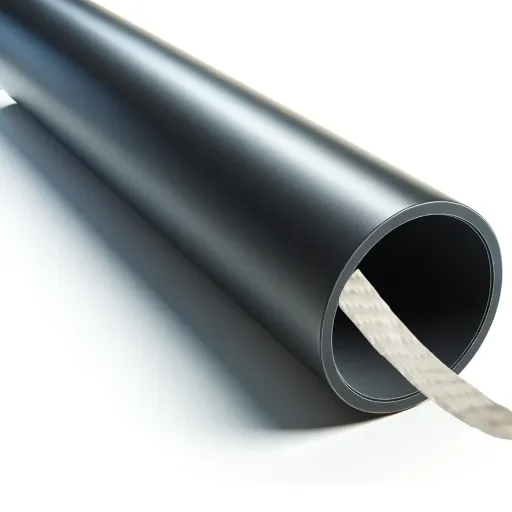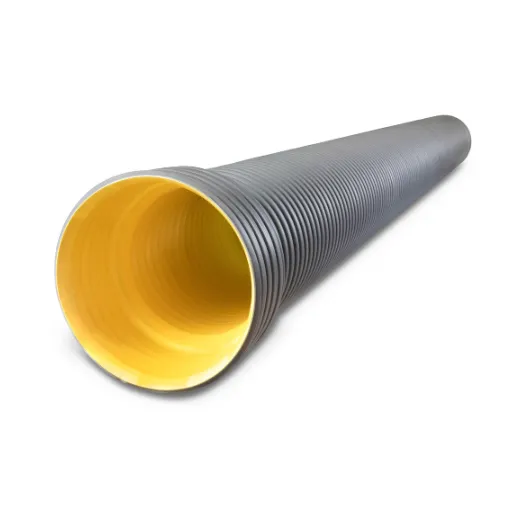Efficient water management systems are essential for both residential and commercial projects, and high-density polyethylene (HDPE) drainage pipes have become the industry standard for their durability, flexibility, and cost-effectiveness. Whether you’re planning a large-scale infrastructure project or a smaller drainage solution, understanding the precise methods for proper HDPE pipe installation is critical to ensuring long-term performance and reliability. This guide is designed to walk you through the technical aspects of HDPE pipe installation, providing you with a step-by-step approach, key considerations, and best practices. By the end of this article, you will have the knowledge needed to execute a professional-grade installation while avoiding common pitfalls, ensuring the integrity of your drainage system for years to come.
What Are the Essential Steps in HDPE Pipe Installation?
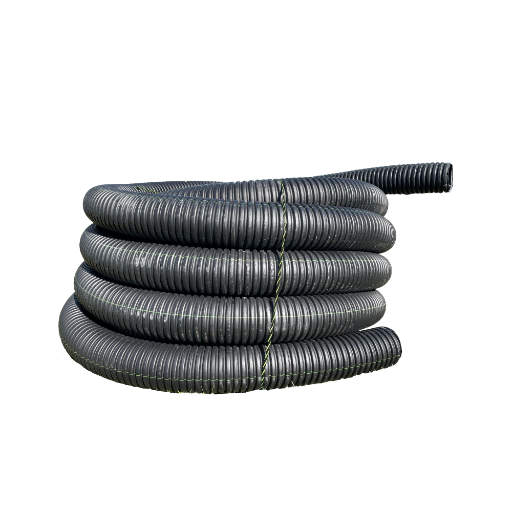
Understanding Installation Guidelines
Observing proper instructions for installation of HDPE pipes is imperative for ensuring outstanding performance and for their durability. The process of installation starts with the complete inspection of the site, focusing on characteristics like the soil type, its load bearing ability, and other ecological factors that may affect the pipe.
Pipes undergo a series of examinations before installation begins, looking for physical defects like scratches or fractures that are gouging and cracking, respectively. Skipping on issues related to the treatment and preservation of these items is also not an option. An easy technique is to set pipelines directly onto a level sheet to help prevent changes in shape and keep pipes out of the burning sunlight.
When a trench is being developed, the width must account for further side area compaction, plus all supporting bed materials, known to be sand or fine-grained gravel, must be uniformly constructed to ensure pipes not only go in easily, but are positioned precisely. During the installation period, the sequence along witn cadence of sections must all ndedged before any joining from butt fusion and electrofusion, the cheapest and most adept merging techniques promising sturdy binds while also not losing liguid seal spaces.
As a last step before backfilling the trench, pressure testing must be done to validate the system’s integrity. This will help in confirming that the pipeline will function at the expected operating pressure and there will failure of any kind. Following these specifics assists not only in efficient installation but also reduces the mistakes encountered during installation, which safeguards the enduring efficiency of the HDPE piping system.
Preparing the Trench for Installation
For the successful installation of HDPE piping systems, proper trench preparation is perhaps the most important prerequisite. The trench’s depth and width must be proportional to the diameter of the pipe, along with the surrounding load conditions. In most cases, the trench must offer at least 6 inches (150 mm) of clearance on both sides of the pipe, so that proper jointing and alignment processes can be carried out. There should be no sharp objects at the bottom of the trench, which should be smooth, properly compacted, and free of any point loads or damaging forces to the pipe.
Choosing the right honest one to maintain the integrity of the installation requires careful thought process. For the layer of the bedding, crushed stones or compacted granular material is recommended, with additional pipe layers of 4 to 6 inches (100 to 150 mm), perched on top of the recommended stone base. A well-uniformed bedding guarantees optimal pipe support, which, in turn, helps mitigate any risks of settlement or misalignment in the future.
Factors like groundwater elevation should also be considered before starting the trench layout. If water levels are higher, dewatering techniques like sump or well point systems might be utilized to maintain the slope of the trench in a dry and safe condition. Adhering to these steps while preparing the trench will help retain the optimum functioning of the HDPE piping system for the longest time while also guaranteeing its safety.
Ensuring Proper Pipe Handling and Placement
The proper handling and placement of HDPE pipes are among the activities that have the most impact on the life span and operability of the piping system. During handling and transporting, the pipes need to be restrained because movement or rubbing against any surface may result in some type of contact surface damage or change in shape; this may also happen due to deformation. Sling and pipes with padding should be used. Chains or any sharp-edged implements should not be used because they could inflict pipe damage.
While conveying the pipes, placing them in the trench, it is imperative to remove sharp rocks or sharp litter that in any manner could impose additional load on the stress that is on the walls of the piping. Usually, the bedding material that is used is known, compacted sand or finer gravel. The trench is done, and the height as well as the alignment of the pipe is done. The pipe alignment concerning the design should be verified, and any slack before joining the procedures are the fixes made avoided.
To achieve leak-proof joint connection complete high quality fusion welding is required like butt fusion. As an example in manufacture policies to be followed for procedures on fusion align, set heating times and cooling times the router be up to regulators of the head also knobs of rules applicable knobs frames. Confirm strong they make welds cold ÷ also Suggestions include Checks, test desukai, or testing makas.
Lastly, backfilling around the pipe must use appropriate materials and compaction techniques to avoid localized stresses or long-term deformations due to voids. Proper handling and placement of pipes not only reduces the chances of system failure but also supports the structural integrity, resilience, and efficiency of the HDPE piping system.
How to Choose the Right HDPE Pipe for Your Project?
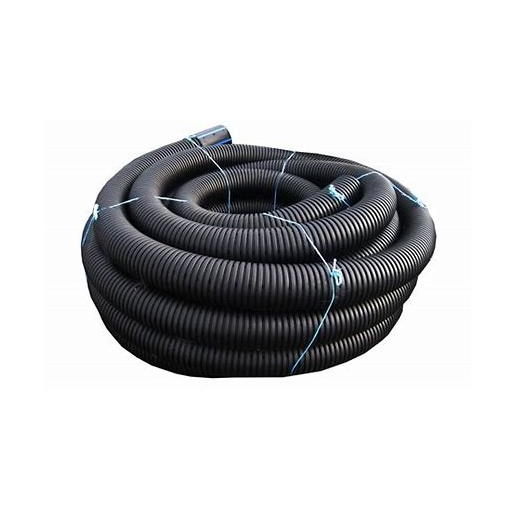
Evaluating Pipe Diameter and Length
The cost, efficiency, and performance of an HDPE piping system are highly influenced by the selection of pipe diameter and length. The required flow rates and applications, be it water distribution, gas pipelines, or industrial processes, determine the diameter. This is accompanied by specific pressure demands. An internal peak demand is usually encountered in a system, and to prevent it from encountering an excessive pressure loss, it becomes essential to accommodate the peak demand.
Considering the layout and topography of the installation site also plays an important role in determining efficacious pipe length. Increased installation site spaciousness can lead to reduced installation time through joint minimization, however, in some cases joints also lead to increased potential leakage points. Enhanced workflow conditions allow for easier securing of materials, leading to simpler handling requirements. Smaller diameter coiled pipes can also simplify the installation process over rough terrain without spiraling costs, proving that changes made in HDPE technology are favorable.
Insures the efficient operation of the HDPE piping system while preserving its durability, structural integrity, and smooth functioning. The incorporation of industry standards tools, cutting-edge resources, and real-time data enhances the optimization of results and fortifies decision-making.
Selecting Appropriate Bedding Material
Choosing an appropriate bedding material is essential in maintaining the quality and reliability of HDPE piping systems. Bedding material functions as a form of foundational support that distributes the load and stress evenly across the pipe. The most important features of adequate bedding materials are granular structure, capability for sufficient compaction, and high permeability to facilitate water drainage.
Industry standards often recommend angular, well-graded gravel or crushed stone due to their high stability and load-bearing capabilities as materials for bedding. These materials enable proper horizontal and vertical piping alignment during construction, preventing the pipeline from undergoing deformation or buckling due to operational pressures. Additionally, the thermal and hydrostatic moisture-resistant properties of the bedding material help control soil erosion and hydrostatic pressure build-up and protect the pipeline’s structural integrity.
Combined with specialized grading equipment and computer modeling, PET geotextile fabrics incorporated into the fine soil help erosion control, optimized design including soil reinforcing structures, grading control, and streamer style improve outcomes targeted for specific site conditions alongside material optimization during installation. Subsequently, studies conducted using advanced geomaterials emphasize geotextile application for filtration and fine soil migration blockage, ensuring subdivision construction minimizes long-term impact.
What Are the Best Practices for Corrugated HDPE Pipe Installation?

Ensuring Proper Compaction and Backfill
Without the right backfilling and compaction techniques, the structural and long-term performance features of corrugated HDPE pipes may be compromised. Achieving optimal uniform compaction for the pipe is of utmost importance. Deficient compaction can cause differential settlements, deformation of the pipe, or other failures under loading conditions. This process starts with selecting appropriate backfill materials. In this case, granular soils or crushed stones with low clay content are selected, as they are optimal for compaction and drainage.
Backfilling must be done symmetrically and in horizontal layers, each more than 15 cm in compressed height. Each of these layers is to be compacted with appropriate mechanical devices i.e. vibratory plates or rammer compactors ensuring even compaction on each edge of the pipe (both sides). It is expected that symmetrical excavation will allow for achieving a target level of modified Proctor density (MPD). The level of compaction defined here must be between 90 and 95% of MPD if strength and stability requirements are desired.
Primary focus must be paid to the haunch area just below the spring line of the pipe and how it is supported. This zone is more critical than other regions regarding the pipe’s stress-bearing attributes, as its support severely affects the load-bearing characteristics of the pipe. Not properly compacted haunches may create voids and, as a result, lessen the efficiency of load distribution. The addition of certain inspection steps, such as measuring the deflection of the pipe after installation, helps guarantee proper backfill procedures and meets industry benchmarks.
With the incorporation of these other listed steps and high-grade materials, these other listed steps alongside quality materials enable the installation of corrugated HDPE pipes to unlocked their optimal potential and lessen the maintenance requirements while increasing the lifespan of the system across various applications.
Using Fittings and Joints Correctly
An adequate selection and placement of the fittings and joints is critical in achieving the performance and the structural integrity of the bearing arrangement of the corrugated pipes made of HDPE. Items such as couplers, elbows, tees, and adapters must meet one of the more basic requirements, so they would be able to sustain operational strains and perform their set functions in the disturbances of temperature and pressure of flow under diurnal conditions. Movable or static earth may also use external or internal joint restraints for high-strength or bearing construction pipes to avoid separation during the pipe movement or the displacement of surrounding earth.
Joints must achieve water-proof or gas-tight connections that are rigid and secure, depending on the systems in use. Perfect examples are the bell-and-spigot joints that use gaskets and need the most care; they need to be appropriately oiled before putting them together so that they can properly seal while also being gentle so that no harm comes to the shaft. Lastly, these joints need to be tested using hydrostatic or air pressure, wherever possible, to validate their functionality in practical scenarios and not just hypotheticals.
The guidelines and manuals provided by the manufacturers should be followed thoroughly during the assembly of fittings and joints to avoid any potential leaks or weaknesses. The use of advanced precision instruments for measuring joints, such as laser tools and other programmed measuring devices, achieves an even higher accuracy level. If these best practices are adopted with the modern solutions of fittings and joints, the operators will be able to preserve the integrity of the systems and successfully meet the challenges imposed by heavy loads and fluid conveyance.
How to Address Common Challenges in HDPE Pipe Installation?
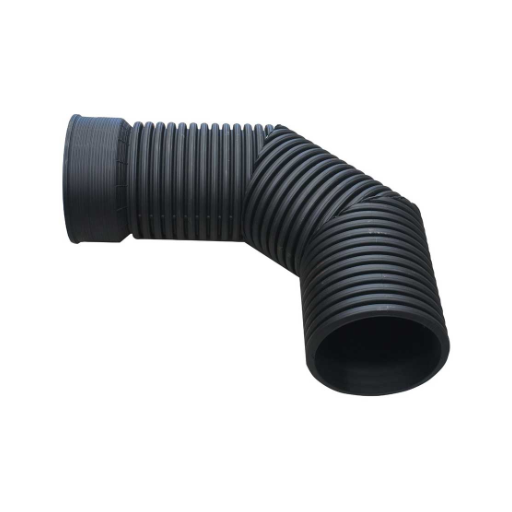
Dealing with Trench Box and Excavation Hazards
As with any other piece of machinery, the risk of failure for trench boxes and excavations can be mitigated with careful planning. Moreover, safe protocols should always be followed to prevent any risks like trench collapses or equipment failures. Trench boxes or shields are protective systems specifically designed to encapsulate workers inside excavation sites and prevent them from getting injured by cave-ins.
Sustaining the operational checks is also equally as important, which in this case would include checking the classification of soil to identify its level of stability, integrating sloping or benching with trench boxes to lessen wall pressure, and checking for possible water obstructions in the trenches. In addition to this, the accuracy of chest positioning should be ensured, meaning that there shouldn’t be any gaps next to the trench walls. Lastly, the use of hydraulic excavators guarantees safe and effective box installations.
As with any piece of equipment, proper and periodic maintenance, along with operator training on the use of trench boxes, will minimize careless handling that can cause accidents. Enhanced personal safety features can be provided by modern technologies, including real-time ground monitoring sensors, which will provide immediate notice if soil movement goes beyond a safe limit. With these protective measures alongside thorough site inspections, capturing safety compliance, and modern technologies, excavation sites can attain a more optimal level of operational safety and efficiency.
Preventing Pipe Deformation and Improper Alignment
Maintaining the proper functioning and structural integrity of underground systems requires correct excavation or installation procedures that reproducibly avoid any improper alignment or pipe deformation. Pipes may deform or bend due to several reasons such as inadequate support of the trench, excessive soil pressure, or even due to poor transport and handling during installation. And with improper pipe installation, joint disintegration, seeping, and even operational inefficacy in the long run can arise.
In this regard, advanced self-correcting measures need to be taken, preferably devoid of heavy research or additional load. To begin with, as a best practice, scientific trench boxes and shoring systems functioning in supporting beam theory must be erected to mitigate the fracture risk due to soil pressure. Pipe materials also selection should be done with utmost care, considering the geotechnical engineering aspect, where the type of bearing soil at the project location would be vital to ensure limit experiences to dynamic and static loads.
Precision alignment can be achieved through the application of exceptional modern-day technology, such as GPS-guided interfaces and laser alignment systems that help with the accurate vertical and horizontal positioning of pipes. Support system design monitors extensively simulate continuous compressive stiffness in construction steel with CAD and design these stretch models during the baseline phase to strengthen systems designed on force assumptions. Strict quantity assurance protocols enable term patrol, monitoring during installation, limit additional alignment errors post-change, and ensure proper strain gauge policing is followed, further enhancing control over poor alignment or deformation resulting errors.
Through the application of these approaches and the use of contemporary technologies, construction projects can improve the safety, dependability, and durability of underground pipe systems.
What Are the Maintenance and Inspection Tips for HDPE Drainage Systems?
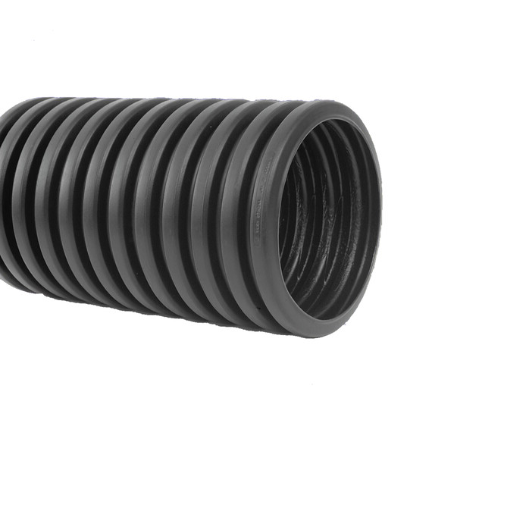
Regular Inspection Schedules
An effective and consistent inspection schedule is essential in maintaining the integrity and functionality of HDPE drainage systems. Regular inspections should include an assessment of joints, connections, and the pipe walls for any signs of wear, deformation, or material fatigue. More advanced methods like ultrasonic or infrared techniques can identify hidden issues like wall thinning, cracking, or stress points that might not be apparent during normal visual inspections. These technologies provide accurate diagnostic information, which allows for immediate corrective action, which, in turn, mitigates further damage.
Equally important in the proper maintenance of the system is removing any potential blockages that may hinder the system’s drainage capabilities. Regular flushing of the pipes under pressure, whether water or air, is highly recommended to clear sediment accumulation, organic debris, or chemical remnants. Performing these cleaning tasks along the schedule of inspections ensures any circumvented obstruction is neutralized before it develops into a significant blockage. Also, more frequent observation of the flow rates and water pressure in the system aids in revealing any operational inefficiencies or undisclosed issues.
To maximize efficiency, inspection intervals should be customized based on piping geometry, water usage, environmental conditions, and the age of the pipe. Systems exposed to heavy rainfall, chemicals, and high traffic areas require more frequent inspections. Creating and maintaining a digital file for each system’s inspection outcome and actions performed provides a historical record that is valuable for future maintenance needs, which improves guidance through scheduled maintenance. These measures improve the reliability and functionality of HDPE drainage systems over time.
Identifying Potential Blockages and Leaks
Identifying MV, HDPE or PVC drainage systems pipe blockages and leakages requires a meticulous step by step approach paired with the latest technology in inspection instruments. Some of the indicators of a potential blockage in the pipes include reduced flow rate, increased pressure in the system and gurgling sounds. Unexplained wet patches, flooding in certain areas and sudden drops in system pressure usually indicates leakage.
Other advanced inspection technologies, such as acoustic sensors and CCTV equipment, greatly help in diagnostics. The CCTV inspection aids operators in observing the inner conditions of the pipe; blockages due to debris, scale, or roots can be seen. Leaks that would otherwise remain undiscovered can be detected by acoustic sensors due to their ability to detect changes in flow noise.
When combined with each other, routine monitoring enables better predictive analytics to address potential failures before they occur. System performance and likelihood of complete failure can be greatly reduced alongside repair costs through proactive issue detection and solving.
References
Frequently Asked Questions (FAQs)
Q: What is HDPE, and why is it used for drainage pipes?
A: HDPE, or high-density polyethylene, is a type of plastic known for its durability, flexibility, and resistance to corrosion. It is often used for drainage pipes because it can withstand various environmental conditions, making it ideal for stormwater management, sewer systems, and other applications requiring durable conduit solutions.
Q: How do I begin the installation of HDPE drainage pipes?
A: Before installing, refer to the installation guide or manual for specific instructions. Start by planning the layout, ensuring the pipe follows the required specifications. Prepare the trench with the proper width and depth, considering the minimum and maximum cover requirements for the type of pipe being used.
Q: What are some key steps in the installation instructions for HDPE pipes?
A: Key steps include laying the HDPE pipe in place, ensuring the pipe is aligned correctly, and using appropriate fill material to secure the pipe. It’s also important to follow any federal regulations and specifications related to the installation process.
Q: What is the importance of minimum cover in HDPE pipe installation?
A: Minimum cover refers to the smallest amount of material required above the pipe to protect it from external loads and impacts. Ensuring the pipe has the minimum cover is crucial to prevent damage and maintain the integrity of the drainage system.
Q: How do corrugated plastic pipes differ from RCP in drainage applications?
A: Corrugated plastic pipes, like HDPE, are lightweight and flexible, offering ease of installation and resistance to corrosion. RCP (reinforced concrete pipe) is heavier and more rigid, suitable for applications requiring high structural strength. Choosing between them depends on specific project needs and conditions.
Q: What should be considered when ensuring maximum cover for HDPE pipes?
A: Maximum cover is the highest depth of material that can be placed over the pipe without risking collapse. It is essential to follow the installation manual and specifications to ensure the pipe can withstand the weight and environmental conditions, using proper installation techniques and backfill materials.
Q: How does gravity flow affect the installation of HDPE drainage pipes?
A: Gravity flow is a critical factor in designing drainage systems, as it dictates how water will move through the conduit. When installing, ensure the pipe has the correct slope and alignment to optimize gravity flow and prevent issues like water pooling or backflow.
Q: What equipment is typically required for installing HDPE drainage pipes?
A: Common equipment includes a backhoe for trenching, heavy equipment for moving fill materials, and tools for cutting and joining the pipes. Proper safety measures should be followed to prevent accidents during the installation process.
Q: Can HDPE pipes be used for both storm drainage and sanitary applications?
A: Yes, HDPE pipes are versatile and can be used for both stormwater management and sanitary sewer applications. Their resistant properties make them suitable for handling various types of runoff and waste materials.
Q: What are the standard lengths for HDPE drainage pipes?
A: HDPE pipes are commonly available in standard lengths that simplify the installation process and reduce the number of joints needed. These lengths can vary, so it’s essential to consult the pocket installation guide or manufacturer’s specifications to determine the best fit for your project.




